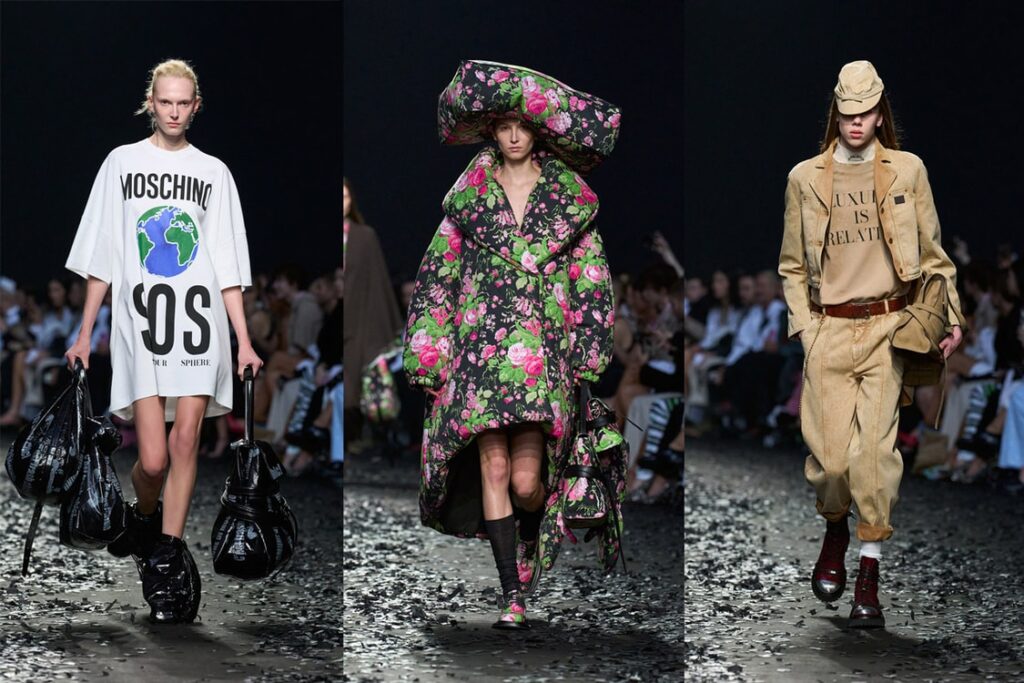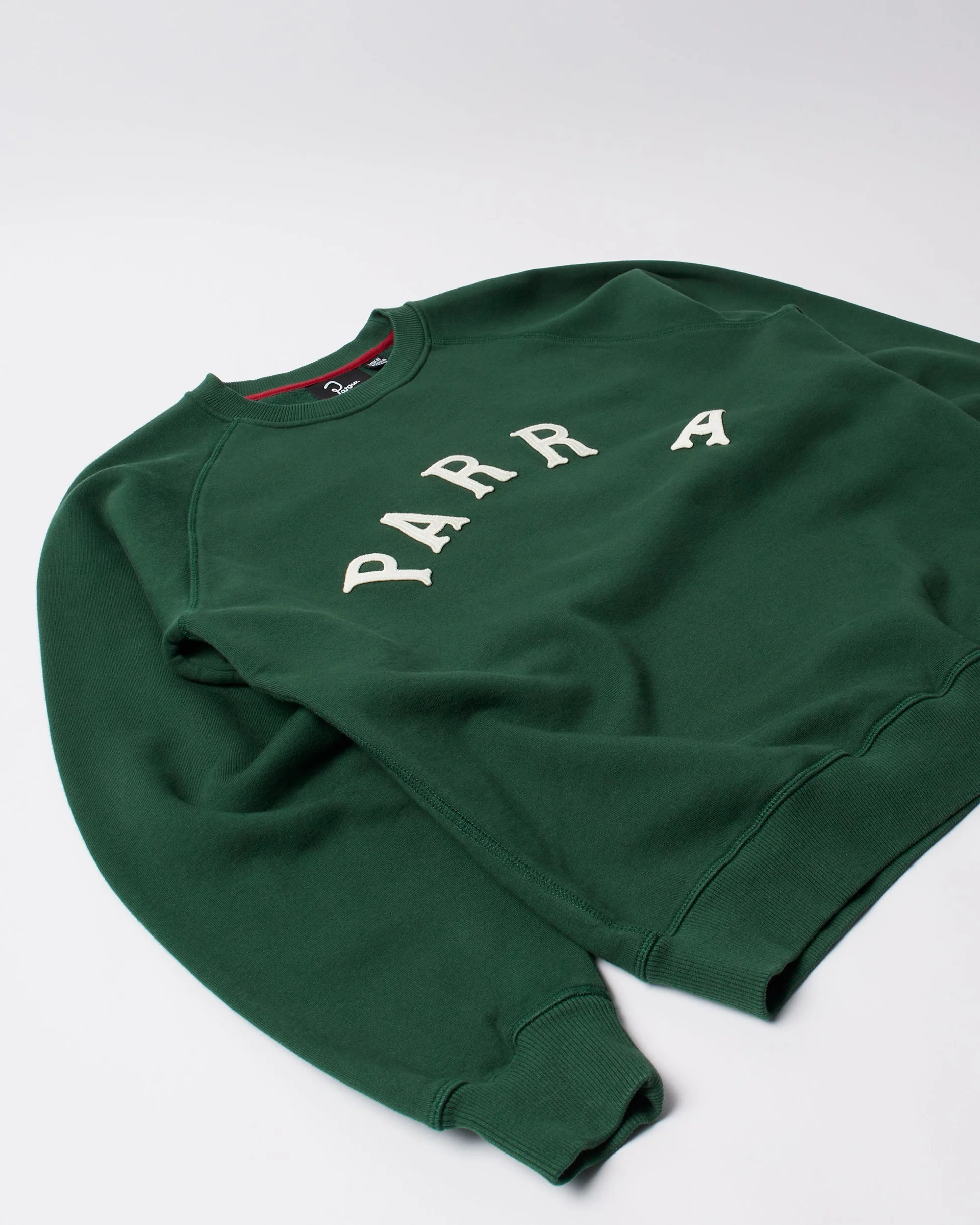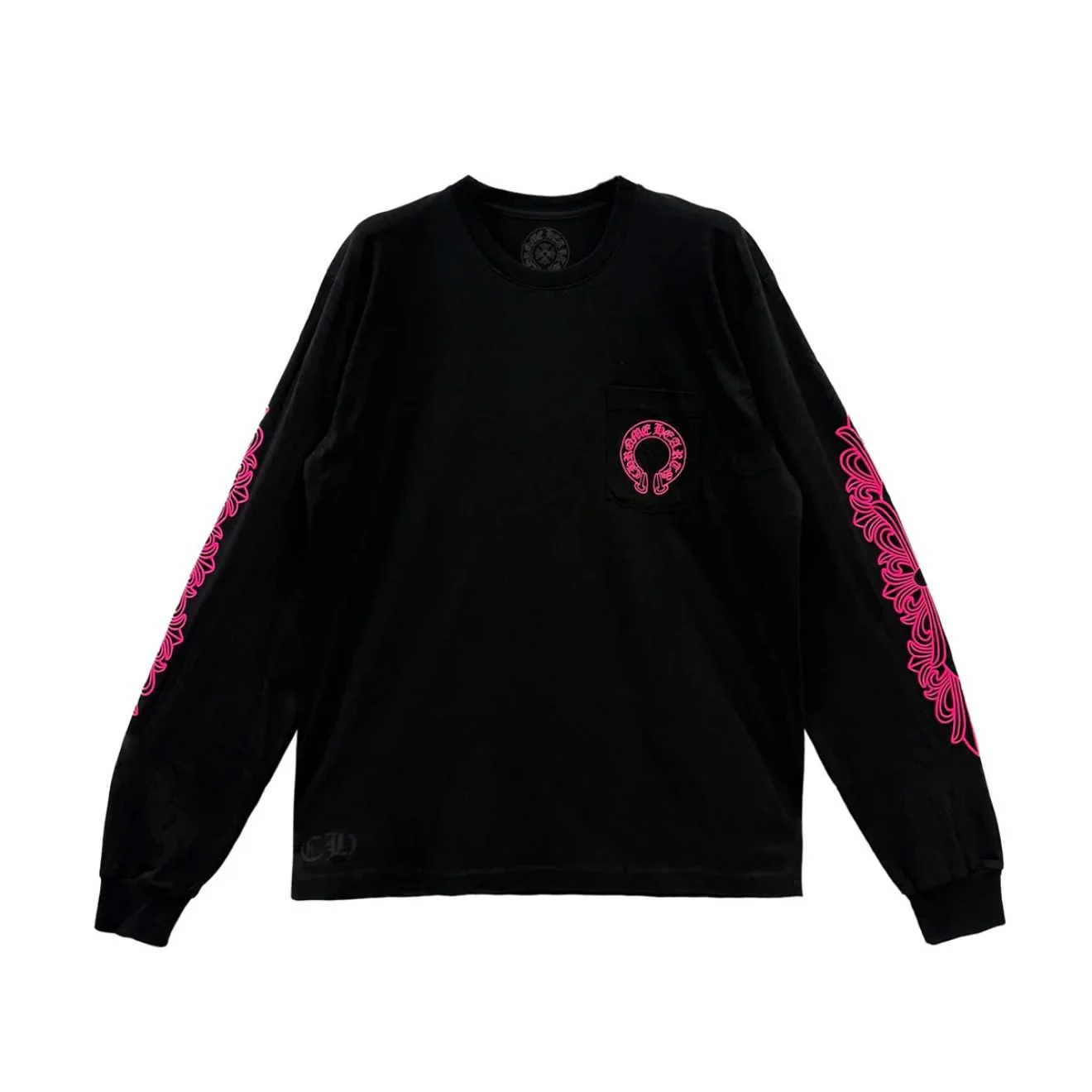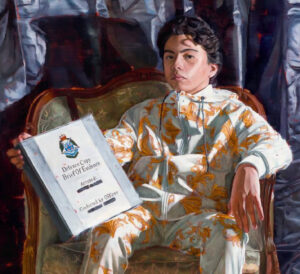Moschino has always been a brand that thrives on irreverence, irony, and a bold sense of humor. From Franco Moschino’s witty slogans to Jeremy Scott’s pop culture-infused collections, the house has never shied away from poking fun at fashion’s self-seriousness. Now, with Adrian Appiolaza at the creative helm, Moschino embarks on a new chapter—one that finds beauty in discarded fragments, upcycling nostalgia, and repurposing the past with a wink.
In a world where sustainability and excess exist in a perpetual tug-of-war, Appiolaza’s debut at Moschino is an invitation to revel in the ephemeral, the absurd, and the utterly delightful. With a Polaroid, a safety pin, and a dream, he reminds us that fashion should, above all, be fun.
From the Archives to the Streets: A Designer Who Knows His History
Adrian Appiolaza may be a new name to the Moschino roster, but his pedigree is anything but inexperienced. Having worked under Jonathan Anderson at Loewe and Alber Elbaz at Lanvin, Appiolaza has spent years honing his craft in houses that balance tradition and innovation. But Moschino presents a different challenge altogether: How does one modernize a brand that thrives on nostalgia without losing its irreverent DNA?
The answer lies in Appiolaza’s approach to history—not as a rigid timeline, but as a chaotic closet filled with treasures waiting to be rediscovered. His debut collection feels like a rummage through a stylish hoarder’s attic, where vintage glamour meets DIY rebellion. Safety pins, torn fabrics, and deconstructed silhouettes are more than mere aesthetic choices; they are a manifesto for a fashion industry drowning in its own waste, reminding us that luxury need not be pristine to be valuable.
The Power of the Safety Pin: Punk Rebellion Meets Couture Craft
The safety pin has long been a symbol of counterculture, famously adopted by punk icons in the 1970s as a sign of anti-establishment defiance. At Moschino, Appiolaza reclaims the safety pin not just as a stylistic statement, but as a metaphor for fashion’s ability to hold itself together despite its fractured state.
From oversized blazers adorned with chains of golden pins to dresses held together by deliberately exposed stitching, the collection revels in the tension between polish and rawness. It’s as if the garments are still in the process of being constructed—or perhaps falling apart in real-time. This playful instability forces us to question fashion’s obsession with perfection and embrace the beauty of imperfection instead.
Polaroids: Capturing Fleeting Moments of Joy
In an age dominated by digital perfection, Appiolaza’s use of Polaroids feels refreshingly human. These instant snapshots, scattered across garments like cherished memories pinned to a bulletin board, speak to the transient nature of fashion and life itself.
Polaroids have an inherent spontaneity, a rawness that resists retouching and curation. By incorporating them into his designs, Appiolaza encourages us to embrace fashion as a living, breathing entity—one that evolves, fades, and ultimately exists in the moment. It’s a reminder that style should not be a rigid construct, but a playful act of self-expression.
Trash or Treasure? The Art of Upcycling Moschino’s Legacy
One of the most striking aspects of Appiolaza’s Moschino is its unapologetic embrace of repurposing. At a time when luxury brands are under increasing scrutiny for their environmental impact, Moschino takes a different approach: What if the past is not something to escape, but something to celebrate?
The collection incorporates fabrics that appear to be salvaged from old collections—scraps of Moschino’s past reimagined for the present. This technique is not just about sustainability; it’s about storytelling. Every patch, every mismatched texture, every seemingly haphazardly placed detail speaks to the idea that fashion’s history is not something to be discarded but something to be continuously reinvented.
This method of “digging through fashion’s trash” is also a direct response to the industry’s growing obsession with newness. By embracing the old, Moschino challenges the notion that luxury is defined by pristine materials and flawless execution. Instead, Appiolaza proposes a vision where imperfection is the new opulence.
A Nod to Franco Moschino’s Legacy
While Appiolaza’s aesthetic leans into punk sensibilities, his approach is deeply rooted in Franco Moschino’s original ethos. The house’s founder was known for his tongue-in-cheek critiques of the fashion industry, often using clothing as a means of social commentary. From jackets emblazoned with “This is a Jacket” to dresses covered in dollar bills, Moschino’s legacy has always been one of playful rebellion.
Appiolaza’s collection echoes this spirit but through a contemporary lens. Instead of direct slogans, he speaks through the language of deconstruction, upcycling, and a refusal to take fashion too seriously. In many ways, his Moschino is a love letter to the brand’s past, filtered through the realities of today’s world.
Fashion That Sparks Joy in an Industry That Often Feels Exhausted
In recent years, fashion has become increasingly burdened by its own weight—endless collections, fast-paced cycles, and an industry struggling to reconcile creativity with commercialism. In this climate, Appiolaza’s Moschino feels like a breath of fresh air, a reminder that fashion should not just be about trends, but about joy.
His debut collection does not seek to revolutionize fashion in the conventional sense. Instead, it invites us to reimagine what we already have, to find beauty in the discarded, and to embrace the playful spirit that Moschino has always championed.
With a Polaroid, a safety pin, and a dream, Adrian Appiolaza is not just making clothes—he’s making a statement. And that statement is clear: Fashion should be fun, fearless, and unafraid to dig through its own past to find the future.
No comments yet.








